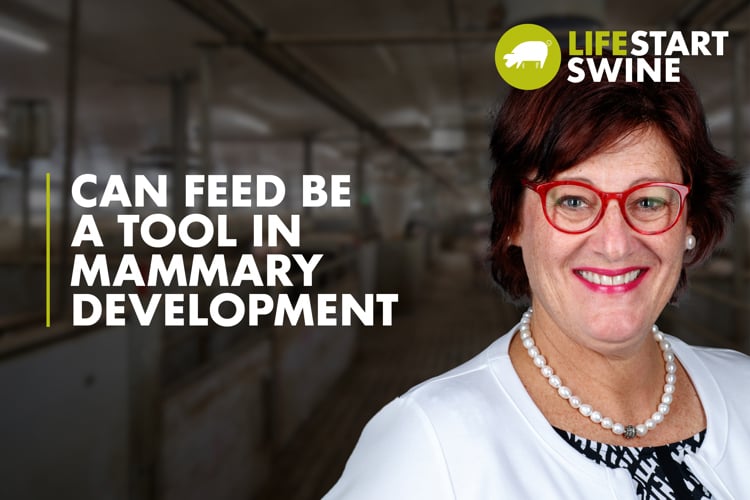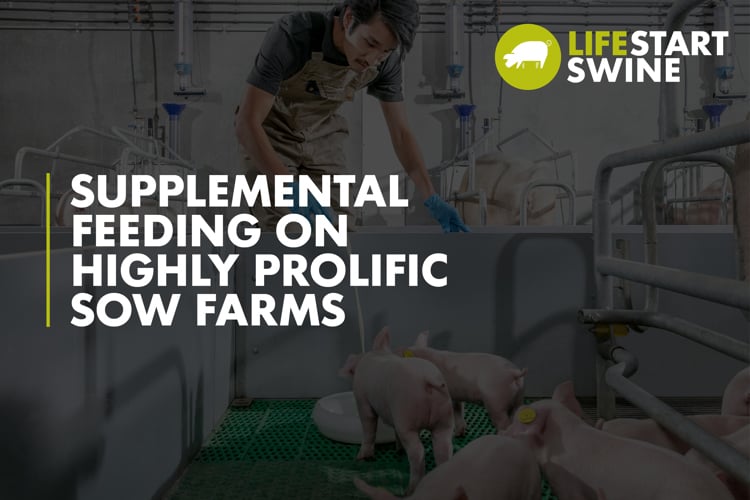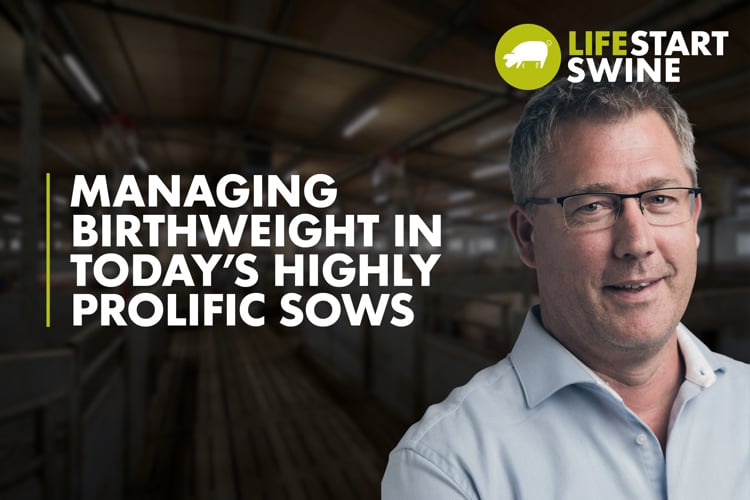
- 2022
- LACTATION
With today’s hyper-prolific sows farrowing ever-larger litters, pig producers are seeing a trend toward greater birth weight and performance variance among piglets in large litters. At the same time smaller and more vulnerable neonates are challenged to consume adequate nutrients, as sow’s milk production capacity is limited. This dilemma begs the question about whether smaller piglets can ever catch up to their larger littermates – and if supplemental feeding is an effective and practical strategy for managing variance.
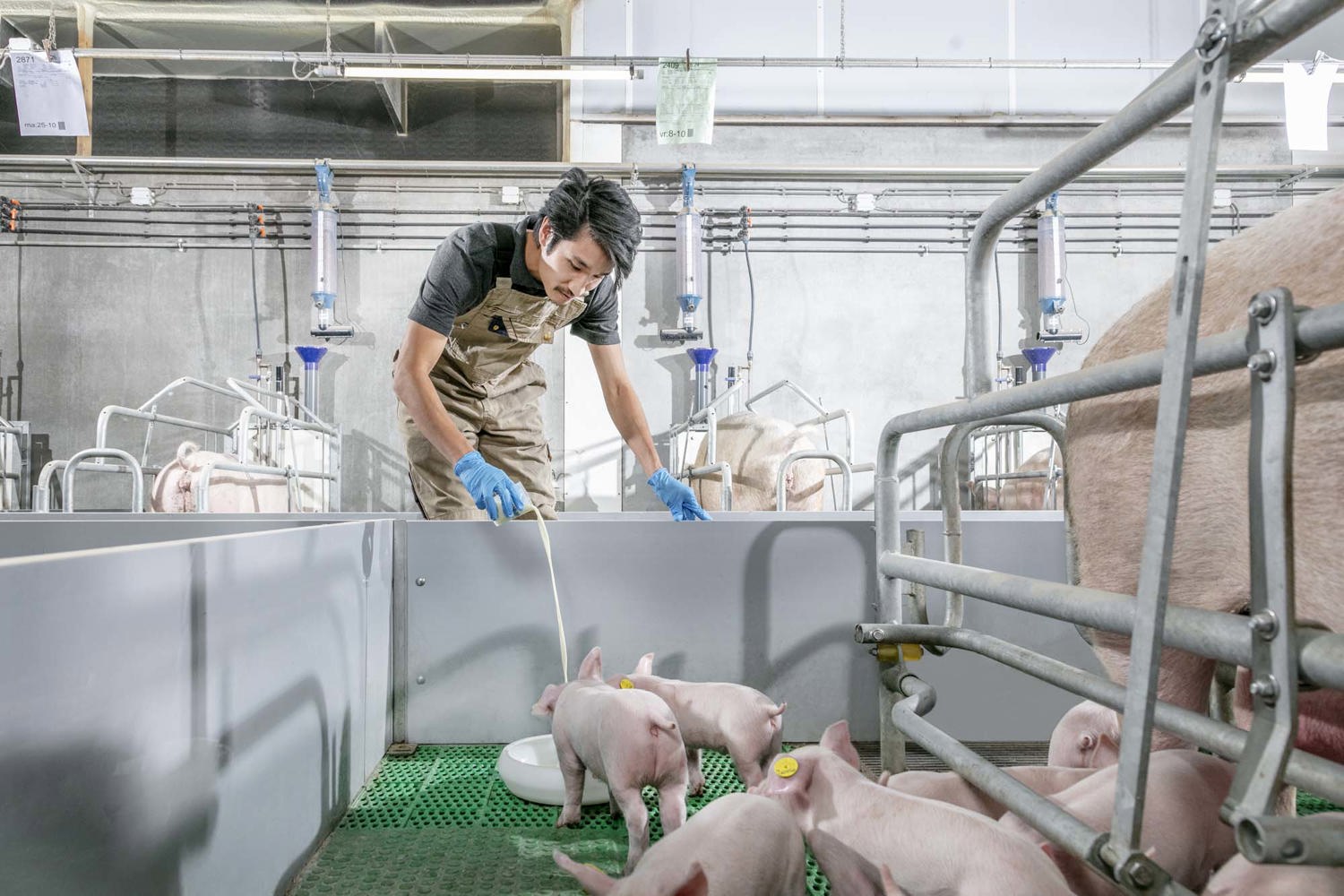
As scientists learn more about early nutrition, research shows that pre-weaning supplementation helps smaller pigs to catch up to their larger litter mates. This is also an effective strategy to stimulate pig’s performance after weaning.
Low birthweight pigs can catch up to littermates
Researchers from Trouw Nutrition R&D analyzed a data set of more than 60,000 piglets born at three research centers and noted that a piglet’s low birth weight does not mean it cannot catch up with its larger littermates. Researchers concluded that in addition to birthweight, both weaning weight and bodyweight two weeks post-weaning are important determinants of a piglet’s bodyweight at the end of the nursery phase. This conclusion concurs with data from other research extending this observation up to slaughter weight. Analysis further shows that lighter weight piglets can catch up to their heavier peers as these lighter weight animals appear to be as efficient in digesting nutrients and achieving growth performance as their heavier littermates.
Favorable influences on early feed intake
Supplemental feed intake typically follows a path of gradual increase up to two weeks of age and then surges sharply upward until weaning. This intake pattern coincides with a gap between the sow’s milk production and the nutrient requirements of her fast-growing litter during the late lactation phase. Over a 24-day lactation period, piglets’ feed intakes were observed to range from 0 to more than 1 kg of dry matter per piglet, and a good average was 400 g per piglet.
A piglet’s level of intake is influenced by many factors including litter size. Figure 1 clearly shows that individual piglets in larger litters are more likely to consume more supplemental feed. Other factors that influence feed intake include length of lactation, the sow’s milk production, health status and room temperature.
Although often considered a key performance metric, a piglet’s birthweight has only a limited influence on its supplemental feed intake. Researchers observed that the average birthweight of piglets identified as “eaters” was similar to that of “non-eaters”, with both eaters and non-eaters found among very light (< 1kg) and heavy (>2 kg) animals.
From a farm management perspective, Figure 2 shows how low or highly intensive approaches to supplemental feeding influence feed intake. In general, supplementation will promote performance and health and, especially with longer lactations, supplementing piglets helps sows’ ability to maintain their body condition and health.
Subtle effects of supplementation
Positive effects of pre-weaning supplementation have been observed in assessments of post-weaning performance. For example, a study together with Wageningen University evaluated how supplemental feeding might influence development of the pre-weaning gut. In the study, researchers hypothesized that specific composition of the feed could induce secretion of gut hormones that modulate intestinal development. Two groups of piglets were studied, with both groups farrowed from prolific sows (at least 13.5 piglets) of similar parities. The first group received a highly nutrient dense, complex milk replacer, while a control group received sow milk as its only source of nutrients.
Body weight and gut development of piglets were assessed on day 21 where piglets receiving the milk replacer consumed close to 80 g of dry matter per piglet per day and had a 20% higher weight gain (310 vs 255 g/day) during the week prior to post-mortem analysis, compared to non-supplemented pigs. Additionally, close to 90% of piglets consumed the milk replacer, underlining the desire of piglets in current production systems to access supplemental nutrition in addition to sow milk.
Beyond being about half a kilogram heavier than pigs in the control group, pigs in supplemented litters were also more homogenous.
From a physiological perspective, the intestines of supplemented piglets were heavier than those of the control animals, both in absolute terms and when expressed as a percentage of body weight. Analysis of gut tissue showed that supplemented animals showed signs of higher cell proliferation, such as increased crypt depths and PCNA, a marker for cell proliferation. Finally, indices for gut development and gut function were more favorable in pigs that received the milk replacer (MR). The MR animals also had higher concentrations of fermentation products in the large intestine, indicating a greater level of microbial activity. These changes observed in piglets that received milk replacers could conceivably increase capacity for the uptake of nutrients, supporting a better response to the abrupt weaning transition.
However, providing supplemental milk and creep feed does not necessarily result in a higher weaning weight, especially when weaning occurs at an early age. The primary benefit of supplementation arises from better preparing the gut for weaning and enhanced post-weaning performance and health. Recent results show that creep feed can also help to reduce post-weaning diarrhea. Farrowing room staff working on highly prolific sow farms can stimulate piglets’ feed intake by providing palatable and well-balanced diets via supplementation as part of a feeding management strategy.
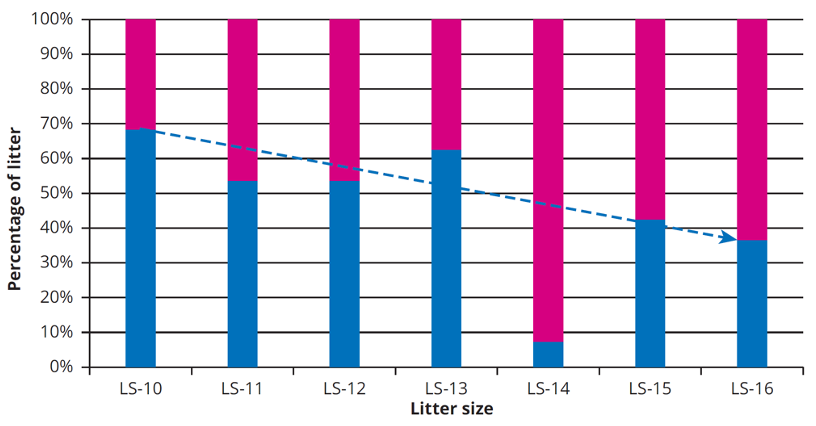
Figure 1: Increasing litter size stimulates more piglets in a litter to eat supplemental feed. Pink bar = % eaters; Blue bar = non-eaters on day 20.
Source: Trouw Nutrition R&D, 2015
Author details - Jan Willem Resink, Senior Researcher at Trouw Nutrition

